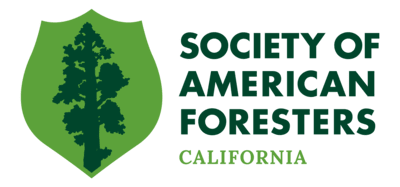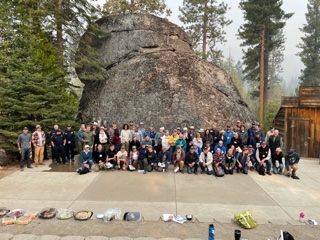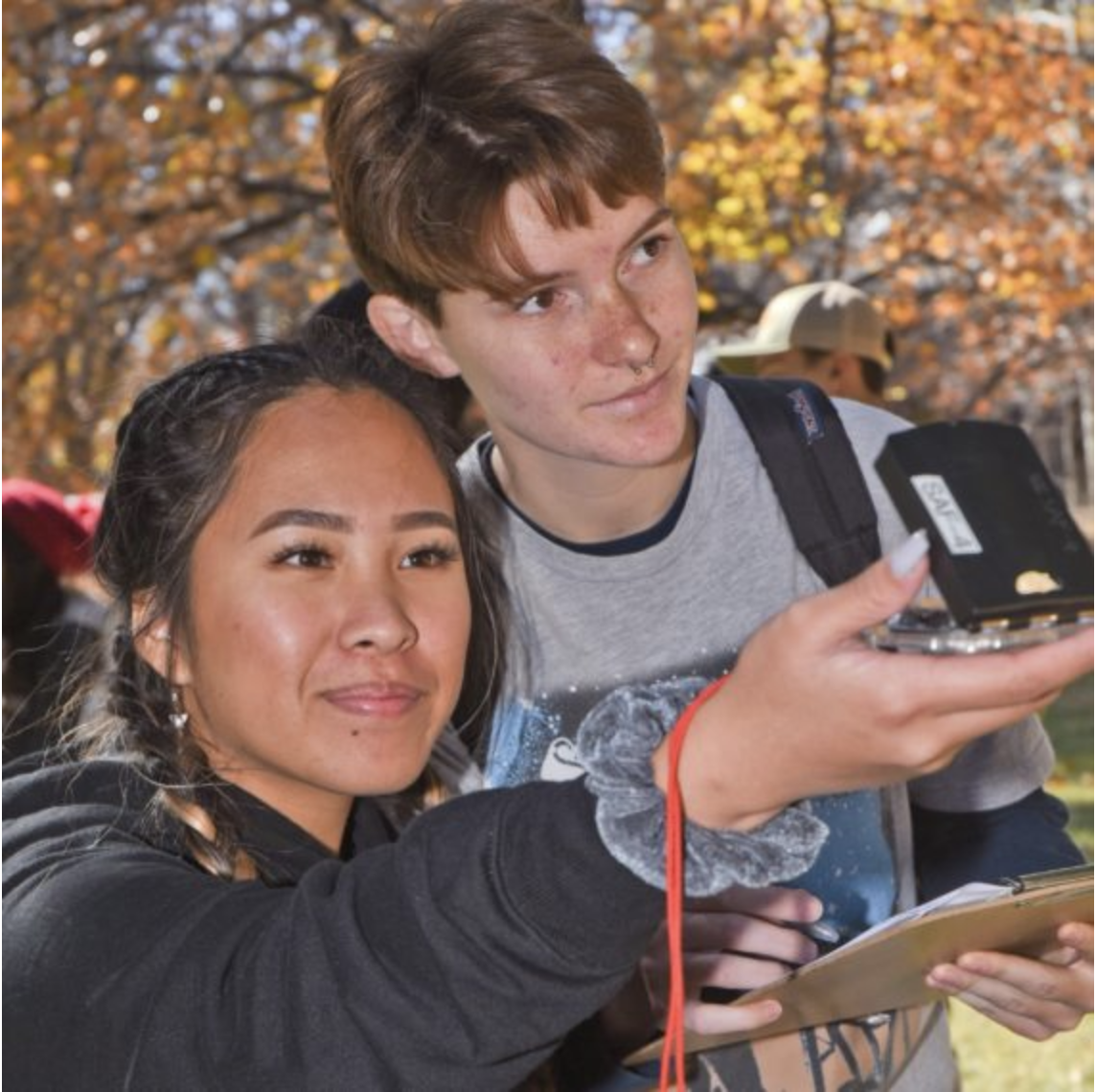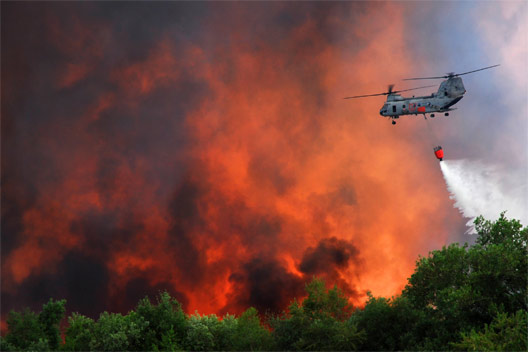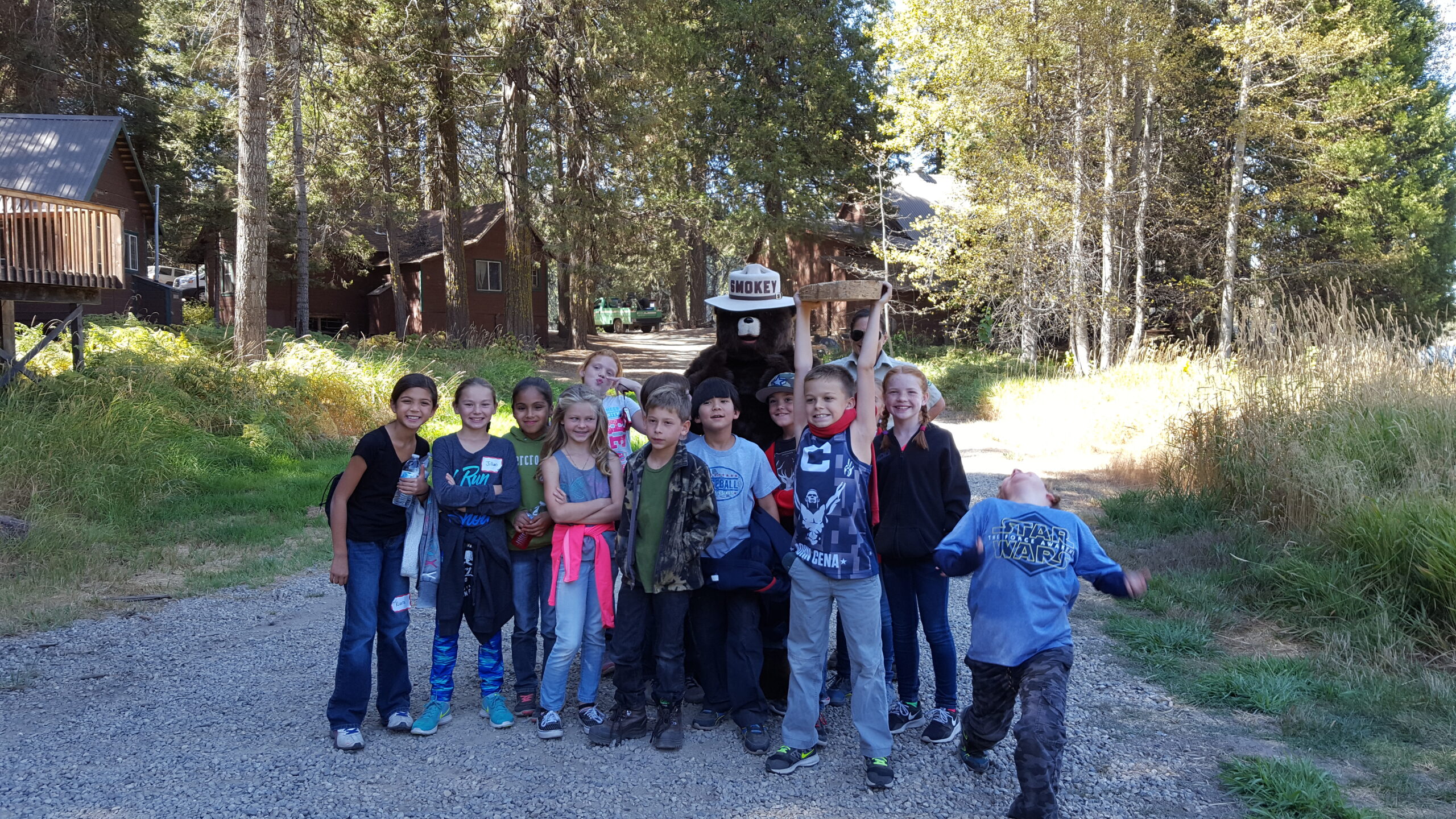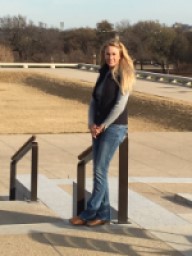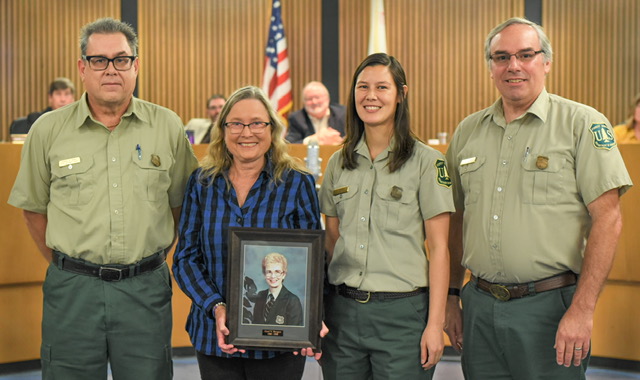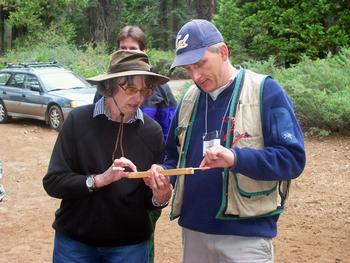By Gary Brittner, Sac-Tahoe Chapter Chair
The California SAF Summer meeting and field trip was held September 16 – 17 in the Shaver Lake area. Vice-chair Rachelle Hedges, Executive Director Kathleen Burr, and others, coordinated an outstanding meeting and field trip.
Following the Thursday Executive Committee meeting, the evening dinner speaker was David Pomaville, former Fresno County Health Department Director. Hardly a speaker with any forestry connection I thought. He gave a great presentation because his department included the Fresno County Office of Emergency Services. He focused on the work they did starting several years ago following the massive die off from drought and bug kill in the Fresno County pine belt. Their aggressive approach to preparing for a potential wildfire set the stage and readied them for the 2020 Creek fire. In cooperation with SoCal Edison (SCE), USFS, Calfire, Caltrans, county road department, and a host of other cooperators they established safe ingress and egress routes along narrow twisting forest roads and highways and prepared strategic fuel breaks. Their well-planned emergency prevention plan made response to the fire feasible and the post fire mitigation and recovery work easier.
The field trip focused on how forest management saved SoCal Edison facilities and the Shaver Lake community from the 2020 Creek Fire. Stop 1 discussed treatments to control brush and timber along power line rights of way. There was a SCE power generating station at stop 1 too. Defensible space treatments protected the facility from fire damage (besides above ground facilities there was a water power generator about 20 stories below ground!). On its 50,000 acres of timberland, SCE has a property-wide Vegetation Treatment Plan approved by Calfire. In the area of Stop 2 a variety of methods were used to establish a fuel break. Treatments included falling, bucking, piling, and burning. Along a nearby county road, prescribed fire was the choice to reduce fuels. Both of these projects were supported by Calfire Fresno/Kings Unit staff. These treatment areas were essential for slowing the Creek Fire as it approached the facilities and community. Over the last year or so, prescribed fire was used on about 1,200 acres.
Stop 3 was a subdivision of old cabins. Fuel reduction for defensible space was tricky. Logging commercial trees was not feasible due to market conditions and cabin infrastructure. In this instance California Forest Improvement Program (CFIP) cost sharing was used to reduce fuels with hand labor, chippers, piling and burning. As the Creek Fire approached, Calfire dozers placed a line around the area and aggressive firefighting by engine crews snuffed spot fires within the subdivision. At the last stop, Calfire, SCE, and USFS staff discussed the Shaver Lake West fuel break, reforestation, and wildlife. This fuel break served as the anchor from which Calfire fired out as the Creek Fire attacked. The 400-foot-wide shaded fuel break was vital, like Stop 2, in robbing the Creek Fire of its destructive energy.
Regrettably, if you weren’t there on site you cannot appreciate the importance of the work that was done in anticipation of the “big one” and the drama that unfolded as the firefighters battled the flames. Kudos to SCE and Calfire.
